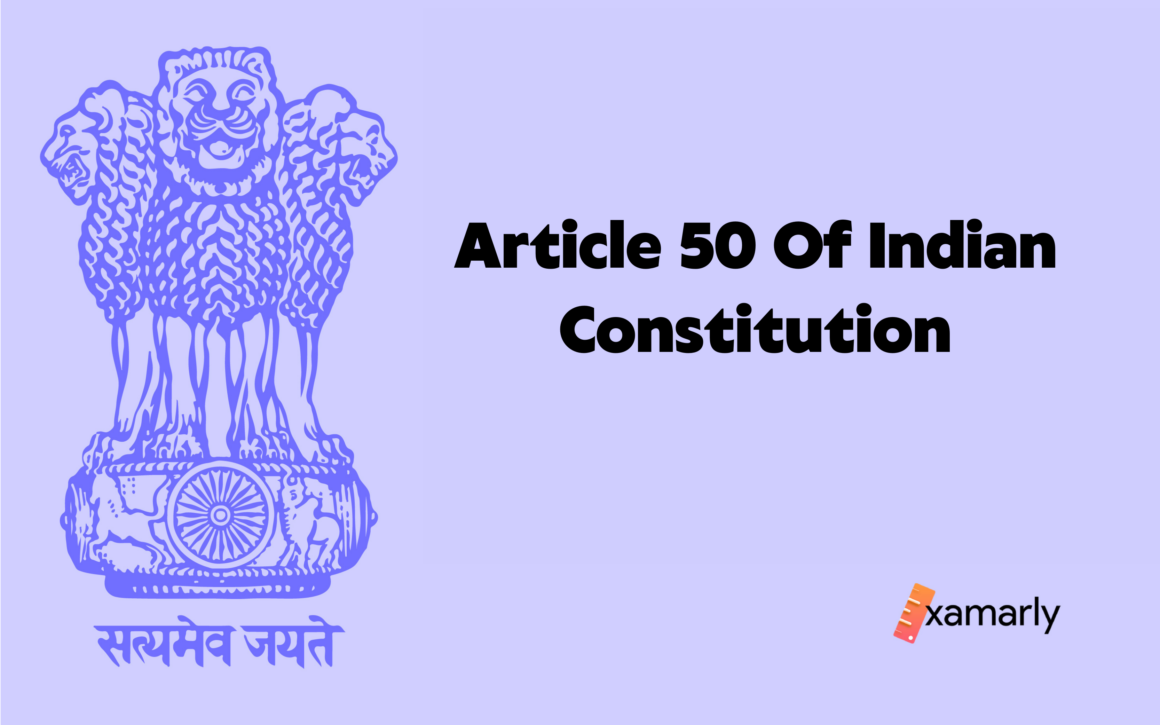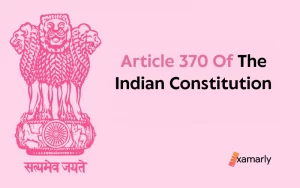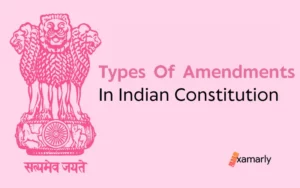Article 50 of the Indian Constitution is a provision in the Constitution that ensures the division of powers. It asserts that to separate the executive powers from the judicial powers in state public services, the state must follow the necessary steps. This is done to ensure government accountability and justice and human fundamental rights. It will prevent the organs of government from exploiting their position or power unfairly and advance the democratic system of governance. The Directive Principles of State Policy (DPSPs) in Part IV of the Constitution include Article 50. No government body, according to this, overrides the basic obligations and jurisdiction of the other bodies.
- Background of Article 50 Of The Indian Constitution
- Elements of the Separation of Powers in Article 50
- What Does Separation of Powers Mean?
- Aims of the Separation of Powers
- Effect of the Doctrine of Separation of Power
- Cases Concerning the Separation of Power
- Rai Sahib Ram Jawaya Kapur and Ors. v. The State of Punjab (1955)
- Gurdial Singh S/O Jagat Singh v. The State (1956)
- Kesavananda Bharati v. the State of Kerala and Anr (1973)
- Union of India v. Sankal Chand Himatlal Sheth (1977)
- Supreme Advocate on Record Association & Anr. v. Union of India (1993)
- P. Kannadasan Etc. v. State of Tamil Nadu & Ors. Etc. (1996)
- Summing Up
Background of Article 50 Of The Indian Constitution
The Indian Constitution has an express provision on the separation of powers in Article 50 of the Indian constitution. According to this article, the state has to do appropriate efforts to keep the executive and judicial branches of government apart. This doctrine of separation of powers is not fully accepted in any nation, still, the logic behind it remains valid today.
The public authority has three organs namely executive, judiciary, and legislature. The concept is due to the idea that three distinct branches of public service cannot share the same power. It is the goal of a democratic society to maintain independence and delegate power to these organs so that there will be no interference and obstruction between the branches and can perform their work and duties freely.
Elements of the Separation of Powers in Article 50
To successfully carry out the duties of the country, no single organ can have all the powers and responsibilities required. The idea of the separation of powers divides the duties of the state into three branches. Each of the three departments of government—executive, judicial, and legislative—has specific duties and acts as a balance on the others. Each component is described in detail below-
The Legislative is an organ of the government responsible for passing laws and setting national and state policies. Legislative powers are to make rules, so it is often known as the advisory body or rule-maker. In the Indian Constitution, laws are made by both the Parliament and the State Assembly. The state assembly has the Vidhan Parishad, the Indian Parliament has the Lok Sabha and the Rajya Sabha, and the Vidhan Sabha (the lower house).
Executive-This governmental branch is accountable for putting the laws are put into effect after being passed by the legislative branch or advisory body, and state and federal. The President, the Prime Minister, and the state governors make up the executive branch of government.
Judiciary-The organ of government responsible for reviewing legislation is the judiciary power. It upholds justice, defends the rights of all citizens, and resolves conflicts. The Supreme Court, high courts, district courts, and all other lower and subordinate courts make up the judiciary.
What Does Separation of Powers Mean?
Separate domains of power for the legislative, judicial, and executive branches of government are referred to as the separation of powers. Every democratic country adheres to the separation of powers premise. It divides up the duties and responsibilities among the three governmental branches.
The doctrine of separation of powers is an important clause of the Constitution. It prevents one unit of the government from overstepping its powers and allows the executive and judiciary to perform their respective duties without undue interference. Article 50 of the Indian Constitution specifies the functions of these three organs.
Aims of the Separation of Powers
- The separation of powers aims to prevent the abuse of power and to safeguard the people’s autonomy. It divides the government into three units and makes the functions of each organ separate.
- The separation of powers of public service and authority will maintain a balance between the three units so that the powers will not be focused on any one organ.
- The Indian Constitutional court establishes certain tasks and powers for each body of government, and each is required to carry them out within those parameters separation of powers will Limit the organs’ ability to interfere with one another’s jobs and responsibilities.
- Because of the separation of power between the branches of government, no one branch may have excessive power or become overly centralized or prone to arbitrary decision-making.
You Might Also Like – Article 44 Of The Indian Constitution
Effect of the Doctrine of Separation of Power
The doctrine of separation of powers is an important principle of the Constitution. This principle states that any one unit of the government cannot have absolute power, the executive and the judiciary should have separate powers. Thus, Article 50 of the Indian constitution states that the executive powers and judiciary powers should be independent.
Maintaining the check and balance mechanism between the three units of government is the primary goal of the separation of powers. Instead of centralization of power, it is best to distribute the powers among them by their respective responsibilities by giving them independent authority.
The doctrine of separation of powers abolishes dictatorial power or monarchy and makes the government answerable to the population for its actions. It provides for justice and protects human rights. While remaining independent from one another, the others keep an eye on each government agency’s operations.
Related – Separation of judiciary from executive
Cases Concerning the Separation of Power
Rai Sahib Ram Jawaya Kapur and Ors. v. The State of Punjab (1955)
The Supreme Court decided that because the roles played by the three organs are entirely diverse, it is not essential to apply rigorously and adhere to the notion of separation of powers.
Gurdial Singh S/O Jagat Singh v. The State (1956)
Here, it was noted that the article mandates that the state take the appropriate actions to maintain the separation of judiciary and executive branches in the state’s public services.
Kesavananda Bharati v. the State of Kerala and Anr (1973)
According to the Supreme Court, the Parliament cannot change the Constitution’s fundamental framework. The Indian Constitution does not rigidly include the notion of separation of powers, as the United Nations Constitution does, but it does foresee some level of such separation. The constitutionally permitted judicial review under Article 226 and Article 32 of the Constitution is one of the components that the check-and-balance system is built upon.
Union of India v. Sankal Chand Himatlal Sheth (1977)
In this judgment, as determined by the Supreme Court, article 50 is the state policy; that the judicial and executive branches; guiding branches of government must be kept apart. As a result, it emphasized how important it is to safeguard the judiciary from executive intervention.
Supreme Advocate on Record Association & Anr. v. Union of India (1993)
In this case, it was recognized that Article 50 is a central principle of the American government and is established in the Constitution. Legally, the government must refrain from meddling in judicial appointments and restrict its involvement to purely ceremonial functions to guarantee that the preferences and aspirations of the judicial family will always take priority.
P. Kannadasan Etc. v. State of Tamil Nadu & Ors. Etc. (1996)
It was decided in this case that the court’s decision could not be used to overturn or repeal any laws passed by the legislature that was later found to be illegal because the legislature lacked the necessary jurisdiction. The legislative is free to change the law by judgment. In a government that involves the separation of central powers, this is a system of checks and balances.
Summing Up
Article 50 of the Indian Constitution is included in DPSP (Directive Principles of State Policy). It sets demands on the state, requiring independent control over public service by the judicial and executive bodies. Each governmental organ is free under the doctrine of separation of powers. It safeguards a person’s freedom from authoritarian power and prohibits organs from doing other organs’ vital duties. The legislative, executive, and judicial branches of the government make up its three organs, and coordination between these branches is essential to the effective running of the government. The centralization of power is constrained by the separation of powers.






